LUCY BURDETTE: John and I are very proud of one of our relatives who draws editorial cartoons in his spare time. It's been to watch him evolve and I thought you'd be interested in his advice about cartooning!
DC Cartoonist: Cartooning, at its best, is the art of saying a lot with very little. The most powerful editorial cartoons don’t just make us laugh—they make us think. They simplify complex issues, expose absurdities, and strike at the heart of a topic with a single, unforgettable image. But how do you actually create a good cartoon? Here’s what I’ve learned over the years, through trial, error, and a lot of drawing (and redrawing).
You don’t need formal art training to be a cartoonist. In fact, some of the funniest cartoons come from crude, simple drawings—sometimes the lack of polish is part of the charm. Like anything else, your drawing skills will improve with practice. So don’t let perfectionism stop you. Just start. It’s okay if you suck at first.
The hardest part of cartooning isn’t the art—it’s coming up with good ideas.
A lot of people get into cartooning because they’ve had one great idea they want to draw. But keeping up a cartooning habit takes more than a single flash of inspiration. The key is developing a cartoonist’s mindset: train your brain to look for humor in everyday life. When something makes you laugh, ask yourself, Could this be a cartoon? I keep a running list of ideas in my phone’s Notes app. Capture the concept first—drawing comes later.
If an idea makes you laugh, chances are someone else will find it funny too. Personally, I find the most effective cartoons shine a light on hypocrisy—especially when it comes from people in power. That’s where cartooning does its most important work: holding up a mirror to society, with a smirk.
Next, know what kind of cartoon you’re creating. There are two main types of editorial cartoons: gag cartoons and political cartoons.
Gag cartoons are timeless, self-contained jokes that don’t rely on current events. They’re silly, absurd, or clever—and they can still be funny years after being drawn. Political cartoons, on the other hand, are satirical takes on the news. They have a shorter shelf life and require you to stay on top of current events. If you're tackling politics or pop culture, you need to be a relentless consumer of the news. Timeliness is everything.
Before putting pen to paper, start with a concept—and think visually. What message are you trying to convey? Can it be distilled into a single strong image or a short series of panels? If not, it might not be right for a cartoon. People often pitch me great stories that just don’t translate into a visual gag. Cartoons are snapshots—not novels.
In a single-panel cartoon, you typically have three tools to communicate: the image, a caption, and dialogue. A lot can be said with a picture—and sometimes no words are needed at all.
When you do use words, keep them short and sharp. Economy of language is everything. Trim the fat. Cut any word that doesn’t absolutely need to be there. A concise, well-constructed joke will always hit harder than a bloated one. Double entendres can be great, but clarity should always win.
Know your audience. That obscure reference might make you laugh—but will anyone else get it? A cartoon is a conversation. Your message needs to land. At the same time, know your own artistic limits. If you’ve got a killer joke that requires drawing a detailed airplane cabin but you can’t quite pull it off, it might be worth simplifying—or shelving the idea for now.
Now it’s time to draw. There are countless online classes and tutorials that can help you improve your technique. Don’t be surprised if it takes several attempts to get your image right. Give yourself time and don’t be afraid to start over. While I respect traditionalists who work on paper, tablets and digital tools can be a cartoonist’s best friend. Apps like Procreate help correct mistakes, smooth out lines, and polish your work—without doing the creative heavy lifting for you. Think of them as enhancers, not replacements.
More recently, some people have started using artificial intelligence to generate images that resemble hand-drawn cartoons. That’s fine if that’s your thing—but if you’re relying on A.I., don’t call yourself a cartoonist.
Just like in writing, cartooning takes revision. It can be a solitary pursuit, but it doesn’t have to be. Share drafts with someone you trust before publishing. I often post rough versions on Reddit—there’s nothing like anonymous feedback to tell you what’s working (and what isn’t). You won’t know if something’s funny until you put it out into the world. Take the feedback seriously. It can help you polish a cartoon—or, just as often, convince you to toss it entirely.
Don’t let originality stress you out. Someone else might have already drawn a version of your punchline—and that’s okay. It happens to all of us. What matters isn’t always being the first—it’s how you execute the idea in your own voice and style.
Drawing a good cartoon isn’t about being the funniest person in the room or the most talented artist. It’s about combining a sharp idea with a clear, effective visual. It takes practice, humility, and the willingness to let go of weak jokes and chase better ones. But when you land a great cartoon, it’s magic.
And remember: everyone needs an editor—even cartoonists.
@DCcartoonist edits the Marginalia Magazine and cartoons under the pen name Heywood Reynolds. Follow him on Instagram.









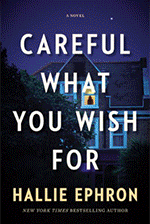
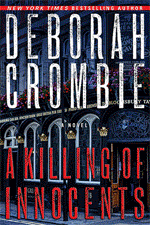
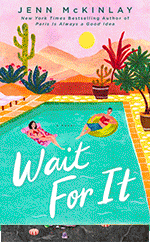
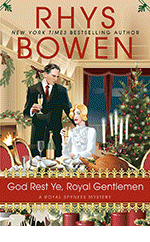
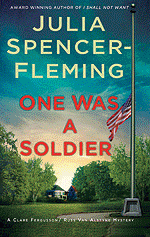
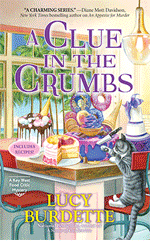
I have great admiration for anyone who can draw a cartoon that makes me laugh . . . or think. Thank you for sharing all this with us . . . .
ReplyDeleteThanks for sharing these tips! I'm pretty sure that's an art form I won't be attempting - my drawings are definitely on the stick-figure end of the spectrum - but I certainly appreciate knowing what goes into political cartooning. I'd never thought about getting feedback and doing revisions. What you said about not wasting words or characters reminded me of short story writing.
ReplyDeleteI soak up the New Yorker cartoons when a new issue comes through the mail slot. DC, where do your cartoons appear?
One of the drawbacks on reading my daily local (Ottawa Citizen) & Canadian national (CBC) news online is that I don't see any cartoons!
ReplyDeleteThanks for telling us more about the process of creating them.
Political cartoons are next level, just as mysteries are next level for novels. I've always admired the art form, and how incisively and precisely a single drawing and caption can pierce a subject or topic. Thank you for the inside baseball, DCC!
ReplyDeleteAs Edith says, the New Yorker cartoons are almost always stellar, but only tangentially political. They're usually at least topical.
I'd submit there is a third type of cartoon, though, the comic book storyline type. I suspect Jay Roberts will agree.
I can remember pouring over The New Yorker back when I was barely old enough to get the jokes. Although there certainly is an arc when it comes to politically insulting cartoons, the 18th and 19th Century ones being positively diabolical, I can hardly look at them these days. I can't remember a time in my long life when I wanted to hide as much as I do now. Time was, when the newspaper arrived, I looked for the cartoons first. Now, I rarely look beyond the headlines.
ReplyDeleteThank you for the tutorial on creating cartoons. I knew that a lot goes into it, much more than being able to draw. One must have ideas that are worth sharing and a desire to share them. It takes skill and a certain kind of talent to tell a whole story in one frame.
Political cartoonists are so necessary right now (and always, really!). I was a big fan of Jack Ohman when he was here in Oregon and was appalled when the WaPo refused to publish Ann Telnaes' cartoon. These cartoons can get to people in a visceral way that's different from reading an opinion column.
ReplyDeleteThank you for this peek behind the scenes!
I am always amazed at how the artist can just get the bite of the joke, and as well, how many just hit the art of the cartoon. To be able to capture the character or the character’s foibles in just a few strokes takes talent.
ReplyDeleteWe daily watch for the political comment. We are in Canada, so get a lot of Canadian and American political topics. There are several well-known cartoonists who are regularly looked forward to, knowing what should be featured as the highlight of the day’s news. Our ‘local’ fellow was ‘let go’, which was unfortunate. We have another who is good, but I found the other so much better on point.
In years gone by, my grandfather was often given a book of the collection of cartoons run in one of the major papers. Even on reading it just in the year following the running of the cartoon, some generated a hunh – what was that about. Now with much history, some as still hunh, and some stand out as what a perfect rendition of a moment in time!